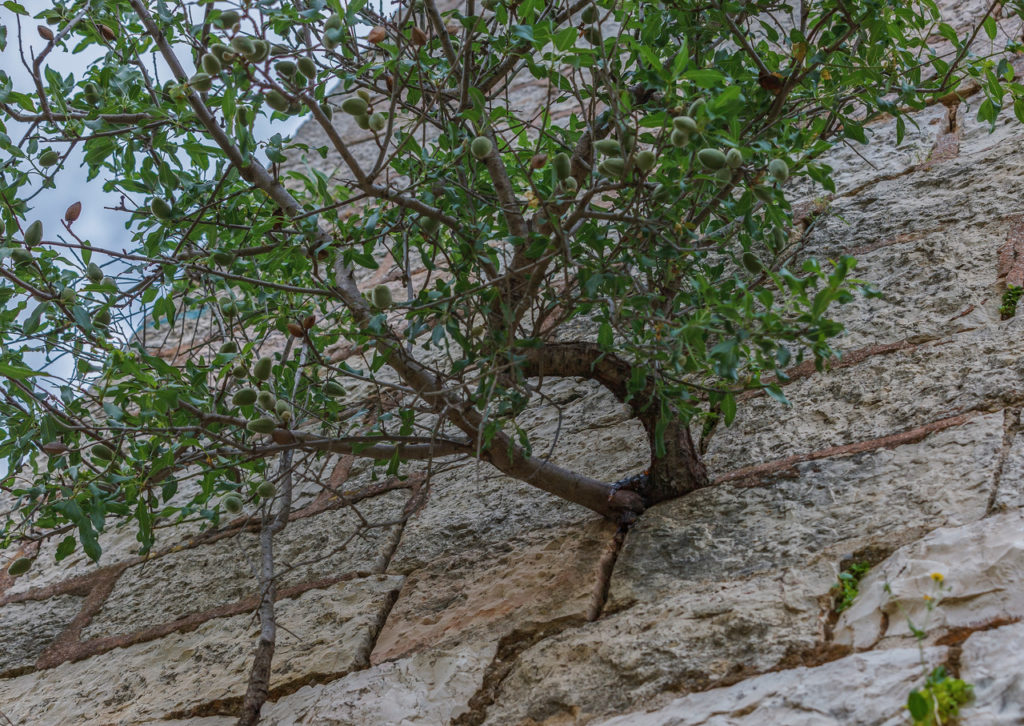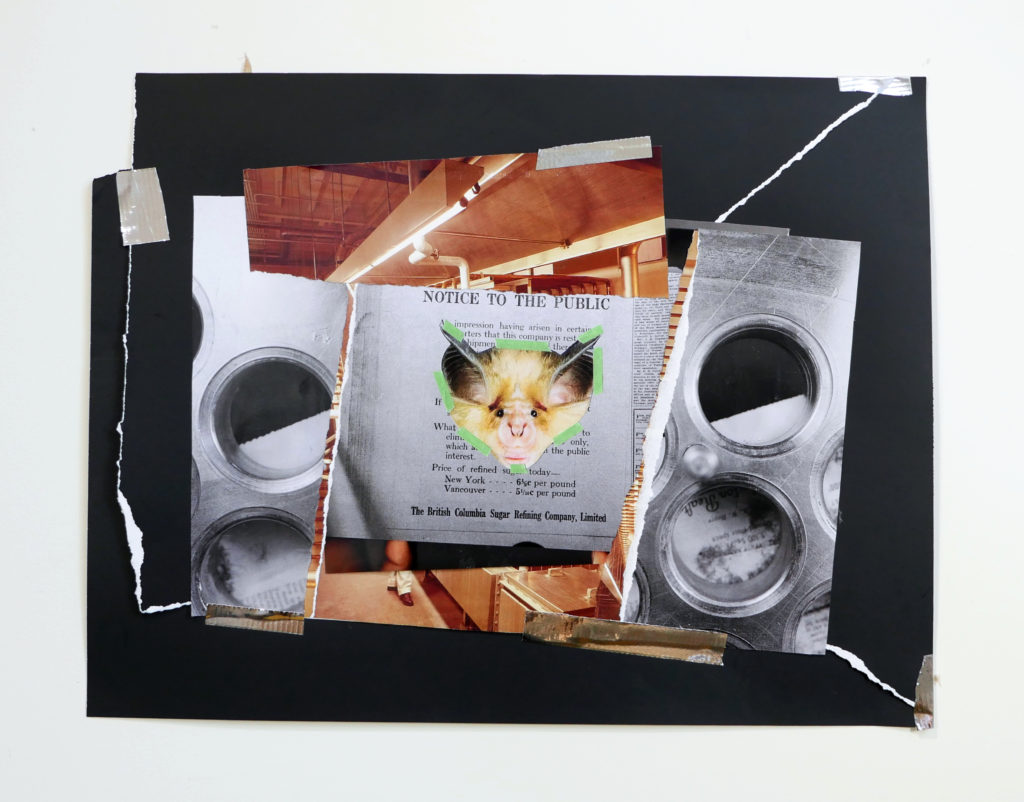Desiree Valadares
What is ‘willfulness’? Where do we tend to find this quality? Who or what is attributed as willful? These questions are at the heart of a 2023 exhibition at the Morris and Helen Belkin Gallery in Vancouver, evocatively titled “The Willful Plot.” Artists Derya Akay and Vivienne Bessette, Gabi Dao, Derek Jarman, Charmian Johnson, Glenn Lewis, Mike MacDonald, Rehab Nazzal, and Dana Qaddah center the garden through a range of multimedia pieces. Their goal: to position the garden (in its many forms) as a willful subject and as an active site of cultural defiance.[1] Together their pieces consider the ‘plot’ as a charged space to interrogate property relations and histories of dispossession, enclosure, dispute and collective action.
Inspired by scholar Sara Ahmed’s queer cultural studies critique on the philosophical concept of the will, the works of art in this exhibition consider “willfulness as audacity, willfulness as standing against, and willfulness as creativity.”[2] Curator Melanie O’Brien complicates perceived notions of the garden as a cultivated plot of land and instead, offers a range of perspectives that position the garden as an unlikely willful subject and actor. In a statement, curator O’Brian encouraged visitors “to look closely, and to think about the kind of relationship of us not just to the land and how we cultivate and how we think about our kind of own mythology surrounds cycles of life, but also how artists kind of slow things down for us.”[3]
Yet, what does it mean to be willful? In her book, Willful Subjects (2014), Sara Ahmed opens with a short tale by the Grimm brothers named ‘The Willful Child’ which offers a cautionary tale.
The story reads:
Once upon a time there was a child who was willful and would not do what her mother wished. For this reason, God had no pleasure in her, and let her become ill. No doctor could do her any good, and in a short time, the child lay on her deathbed. When she had been lowered into her grave, and the earth was spread over her, all at once her little arm came out again and reached upward. And when they had pushed it back in the ground and spread fresh earth over it, it was all to no purpose, for the arm always came out again. Then the mother herself was obliged to go to the grave and strike the arm with a rod. When she had done that, the arm was drawn in, and at last, the child had to rest beneath the ground. And everything went back to normal.
In this chronicle, the costs of being willful or being labelled stubborn and uncooperative or disruptive and defiant are high, even deadly. The willful child is a young girl whose willfulness is articulated by her idiosyncratic actions, “her arms outstretched,” and through her disobedience. Her willfulness is so displeasing that the “authority,” what Ahmed calls the “chain of command,” that is, God, the doctors, and the child’s mother, could not correct her behavior. Even in death, the willful child enacts her resistance by “her outstretched arm” that raises from beneath the ground to disturb her natural surroundings.
By opening Willful Subjects with this tale, Ahmed casts admiration for the willful child, asserting that “to be identified as willful, is to become a problem” (p. 3). Using the figure of “the feminist killjoy” Ahmed identifies willfulness as a feminist tool and a style of politics, in terms of a political struggle to exist and one that can transform ways of being in the world.[4] The figure of the willful subject, and by extension that of the feminist killjoy, is assertive and willful because their existence “is willful work for those whose being is not only not supported by the general body, but deemed a threat to that body” (p. 160).
Moving beyond the body, how do we understand more-than-human subjects as willful actors? Two artists in the exhibition, Rehab Nazzal’s We, the Wild Plants and Fruit Trees (2022) and Charmian Johnson’s series of botanical illustrations broach this provocation. Nazzal’s photographic piece documents how wild plants and trees in Palestinian villages stubbornly grow beyond defined zones and re-claim settler space. These Indigenous species grow through faults and fractures in the built fabric thereby asserting political claims to land through acts of transgression, and intrusion. Much like the willful child’s outstretched arms, these plants, and trees “continue to grow and spread our seeds, finding strength and hope through the cracks of oppression and injustice.”[5] Similarly, the late Charmian Johnson’s illustrations and meticulous renderings of plants challenge non-linear narratives of botanical life. She considers plant life cycles as processes that exist beyond “the logics of human time, holding its own agency, yielding non-linear narratives that give and take, fruit and compost, persist and disappear.”[6] Johnson’s works are neither titled nor dated and challenge typical conventions of botanical illustration and scientific drawing that serve to classify and systematize.

Rehab Nazzal, We, the Wild Plants and Fruit Trees, 2022 (centre) and Canada Park, 2015 (right). Photo courtesy of Rachel Topham Photography.

Charmian Johnson drawings and Mike MacDonald, Secret Garden, 1993. Photo courtesy of Rachel Topham Photography.

Rehab Nazzal, Lifta, 2022, photograph. Image courtesy of the artist.

Charmian Johnson, Untitled (Fritillaria), no date. Ink and graphite on paper. Collection of the Morris and Helen Belkin Art Gallery, gift of the artist, 2019.
Another artist in the exhibition, Gabi Dao, invokes one of Ahmed’s most convincing theoretical argument in Willful Subjects which focuses on memory, temporality, and the archive in relation to willfulness. Ahmed writes, “If the will makes itself into an object, the object is not present: if the will is willing itself, then the will is bringing something into existence that does not yet exist, which includes in some way ‘the will’ itself” (pp. 31–32). Here, Ahmed fleshes out the speculative imagination that plays into the will, driven by memories and the archive of willfulness. Gabi Dao’s evocative collages entitled, Tear Possibility 2-7 (2021), work against willful forgetting through a reconfiguring of the Rogers Sugar (originally BC Sugar) corporation archives, and its overt anti-Chinese newspaper ads. Her act of scanning, tearing, and re-assembling archival fragments creates a new archive or a counter-memory, held together with painter’s tape, that aims to “turn rotten organic matter into nutrients to sustain new life.”[7] Her process plays with the metaphor of decomposition, decay and recomposition and alludes to the garden as a dynamic space with transformative potential for new growth and nourishment.

Gabi Dao, The Protagonists, 2018 and Tear Possibility 2-7, 2021. Photo courtesy of Rachel Topham Photography.

Gabi Dao. Tear Possibility 6 and 7. 2021. Mixed Media Collage. Burnaby Art Gallery.
Similarly, Derya Akay and Vivienne Bessette offer insight into growth and decomposition through an unlikely kitchen appliance. Freon, on ongoing installation started in 2015, features a working refrigerator that connects the exterior space of garden with the interior, domestic space of the kitchen. Their installation calls on viewers to engage with their work and leave/take items from the refrigerator invoking the ethos of food collectives, and community refrigerators. The exterior of the fridge is covered with stickers, old menus, jars, and dead plants while the interior features crocheted fruit and homemade elderflower wine crammed into its shelves alongside other items slowly decaying such as dead dandelion heads, alongside a preserved CD of Kate Bush’s Hounds of Love. This focus on cooking, food storage, knowledge sharing and community gathering aims to produce a new archive of willfulness that sees gardens in relation to larger systems of food production, cultivation, consumption, and decay.
Ultimately, The Willful Plot moves beyond normative notions of a garden as paradise, an aesthetic space, or as a benign plot of land. Using Sara Ahmed’s provocations and careful study of willfulness, the exhibition challenges viewers to think relationally and consider how willfulness is enacted through plant life, the artistic process, and viewer participation. It confronts various elements of a garden and shows how the politics of disruption and refusal to contemporary settler and capitalist logics can occur at a multiscalar level.

Derya Akay and Vivienne Bessette, Freon, 2015-ongoing. Photo courtesy of Rachel Topham Photography.
[1] The exhibition curated by Melanie O’Brian is part of the 2023 Capture Photography Festival, and made possible with the generous support of the Canada Council for the Arts, the Province of British Columbia through the BC Arts Council and the Belkin Curator’s Forum members.
[2] University of British Columbia, The Willful Plot. Exhibition Description. [Available] https://belkin.ubc.ca/exhibitions/the-willful-plot/
[3] Marie Erikson. The Ubyssey. [Available] https://ubyssey.ca/culture/a-closer-look-at-nature-in-the-belkin-gallerys-the-willful-plot/
[4] The Promise of Happiness (2010) and What’s the Use and Willful Subjects, are part of Ahmed’s queer trilogy, which traces subjects who fail to live their life on the conditions of others, specifically heteronormative constructions of subjectivity.
[5] Monica Reyes Gallery. Rehab Nazzal. [Available] https://www.monicareyesgallery.com/rehab-nazzal.html
[6] University of British Columbia, The Willful Plot. Exhibition Description. [Available] https://belkin.ubc.ca/exhibitions/the-willful-plot/
[7] The Bows Billboard. Gabi Dao. [Available] https://www.thebows.org/projects/tear-possibility-8
Dr. Desiree Valadares is an Assistant Professor at the University of British Columbia in the Geography Department. She has training in art history, landscape architecture and architectural history. Her current research and writing focus on land tenure in western Canada and the non-contiguous namely, Alaska and Hawai’i, in the context of contemporary preservation of Second World War incarceration sites in the Indigenous Pacific. Valadares was included in The Willful Plot exhibition Speaker Series to contextualize the exhibition in the context of her ongoing research and interest in the concept of willfulness.